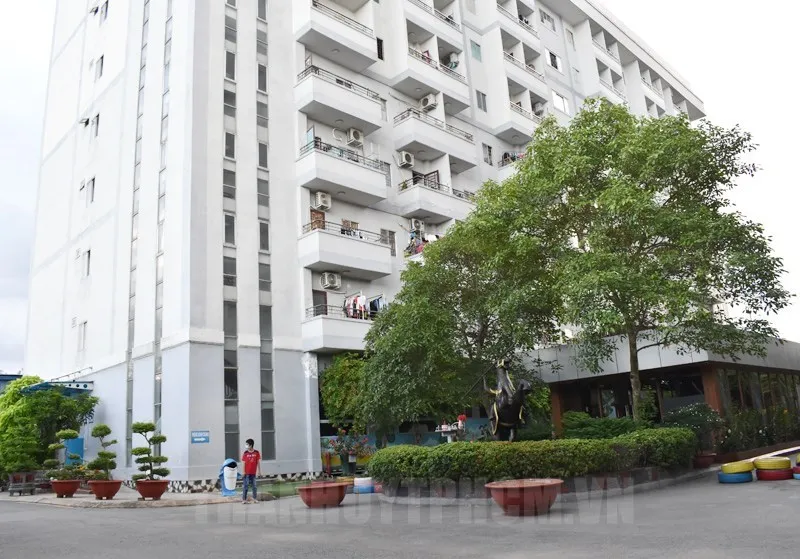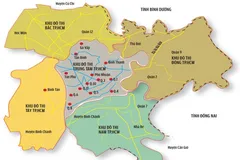
These include low-interest loan packages targeting those under 35 — a demographic with rising demand but limited resources. However, for many young Vietnamese in major cities, the dream of owning a home remains out of reach, as the mismatch between incomes and property prices continues to widen, and the supply of affordable homes falls short of demand.
Cheap Credit Schemes Gain Momentum
A significant policy development came at the start of 2025, when Prime Minister Phạm Minh Chính instructed commercial banks to design and implement preferential credit programmes tailored to young homebuyers. The market responded quickly. Several commercial banks rolled out attractive mortgage packages with ultra-low introductory interest rates.
ACB pioneered the “First Home” programme, offering 30-year loans with fixed rates starting at just 5.5% per annum for the first five years. BIDV followed suit, introducing a similar scheme with the same starting rate for the first three years, followed by a floating rate pegged to the 24-month term deposit interest rate plus a 3% margin. VIB offered tiered rate options, including 5.9% for six months, 6.9% for one year, and 7.9% for two years.
The momentum continued in May, when the SBV formally launched a subsidised credit scheme for homebuyers under 35, specifically geared towards the purchase of social housing. Nine banks were enlisted to participate, including the four major state-owned lenders — Agribank, BIDV, Vietcombank, and VietinBank — along with large commercial players such as HDBank, VPBank, Techcombank, TPBank, and MB.
The terms were generous by local standards: a fixed interest rate of 5.9% per annum from July until the end of 2025, with interest 2 percentage points below standard medium- and long-term lending rates for the first five years, and 1 point lower for the subsequent decade. These initiatives signalled a clear commitment to support the housing aspirations of younger generations. Yet for many, the reality on the ground tells a different story.
Prices Outpace Pay Cheques
Despite these measures, young people continue to face formidable barriers in the property market, particularly in large urban centres like Ho Chi Minh City. Surveys suggest that those aged 22 to 40 are increasingly becoming the dominant force in the housing market, replacing middle-aged buyers. In Ho Chi Minh City alone, roughly 1.6 million young individuals are estimated to be in the market for a home.
However, while demand has surged, income levels have not kept pace with property prices. Ha Quang Hung, Deputy Director of the Housing and Real Estate Market Management Department at the Ministry of Construction, notes that an average 70m² apartment in a major city typically costs between VND 3–4 billion. For a young person to afford such a property, they would need to save their entire income for 20 to 25 years — a stark indicator of the country’s inflated house price-to-income ratio.
The result is that most young couples earning a combined monthly income of VND 20–30 million find themselves forced to rent or live with family, unable to accumulate sufficient savings to buy a home — unless they receive substantial family support or access state-backed loan schemes. Even then, housing affordability remains elusive.
Since 2023, the Vietnamese government has promoted a large-scale social housing programme, aiming to build one million affordable homes between 2021 and 2030. The initiative is split into two phases: 428,000 units during 2021–2025 and another 634,000 between 2025 and 2030. While the ambition is clear, implementation has faltered. As of mid-2025, only 51% of the target for the first phase has been met, with many projects delayed or cancelled.
Mismatch Between Policy and Reality
Ironically, even social housing prices remain prohibitive for many of the low-income earners they are intended to serve. National Assembly delegates recently echoed the concerns of working-class citizens during parliamentary sessions, highlighting the growing disconnect between stagnant wages and rapidly increasing property and living costs. Many social housing units are priced well beyond the reach of those earning VND 10–15 million per month — the very group these policies aim to support.
The issue is compounded by complex eligibility criteria and bureaucratic hurdles, which deter potential applicants. Although a range of government-backed rental and purchase options are technically available, high upfront payments and stringent documentation requirements often disqualify low-income buyers.
Take, for example, a newly announced social housing project in southern Vietnam. Apartments range from 35 to 70m² and are priced between VND 789 million and VND 1.5 billion. Buyers must contribute between VND 240 and 500 million in personal funds and commit to monthly payments of VND 3–5 million. For larger social housing townhouses — typically one ground floor, one mezzanine, and one upper floor — prices start at VND 2.3 billion, with minimum upfront contributions of over VND 800 million and monthly repayments of VND 9 million.
These figures are clearly out of step with the incomes of the target demographic. A young worker earning less than VND 15 million a month would face severe financial strain attempting to meet such obligations, even under favourable credit terms.
The State Bank itself acknowledges a central challenge: while financing has been made more accessible, the market still lacks a sufficient supply of housing priced appropriately for young buyers. Simply put, the homes that are available — even those deemed "affordable" — remain beyond the financial reach of most.
Vietnam’s housing affordability crisis is not merely a function of financing constraints. It is fundamentally a supply-side problem. Without a significant increase in the stock of genuinely affordable homes, even the most generous credit policies will have limited impact.
In the long term, the solution lies in aligning housing development with income realities. This means accelerating social housing construction, ensuring transparent and efficient allocation processes, and enforcing stricter pricing controls on designated affordable units. As it stands, the housing aspirations of millions of young Vietnamese remain aspirations only — weighed down by stagnant wages, high construction costs, and a property market that favours profit over equity.
Until these structural issues are addressed, subsidised interest rates may offer only temporary relief, not a permanent path to homeownership.




















